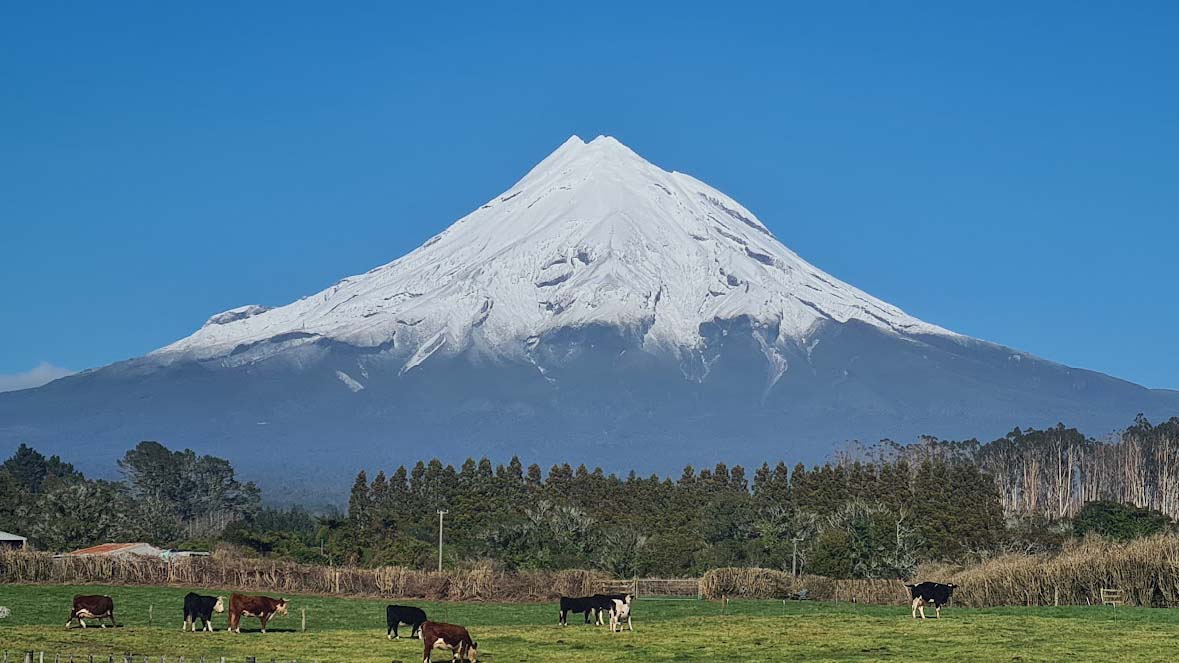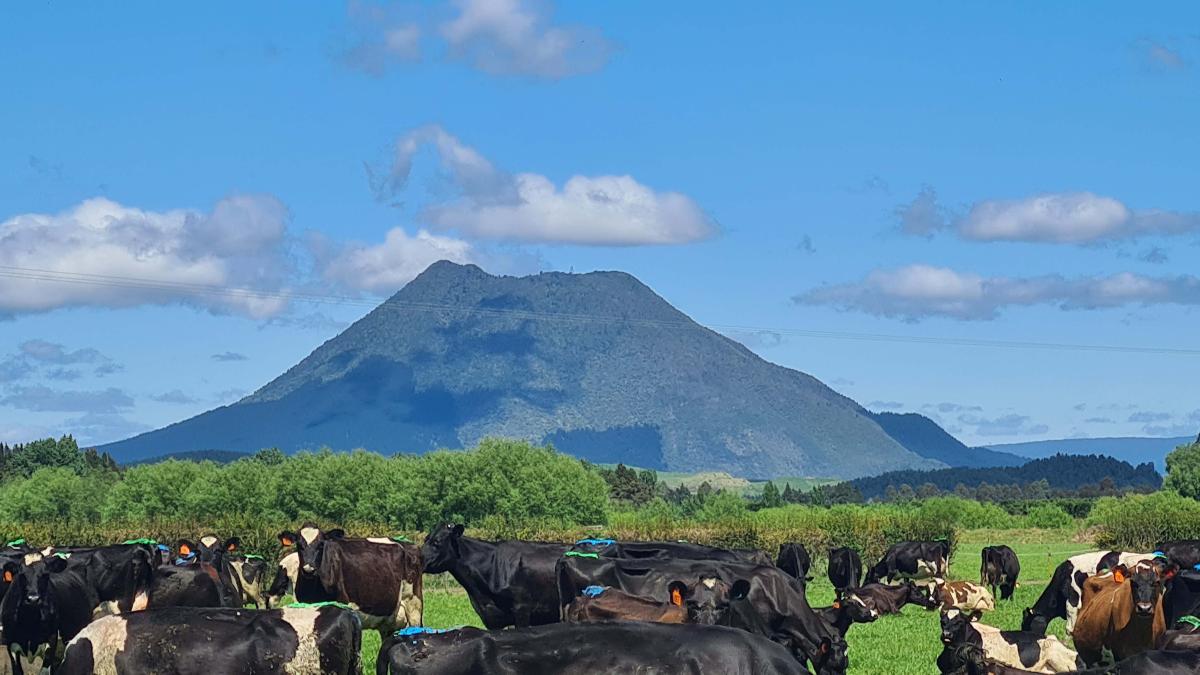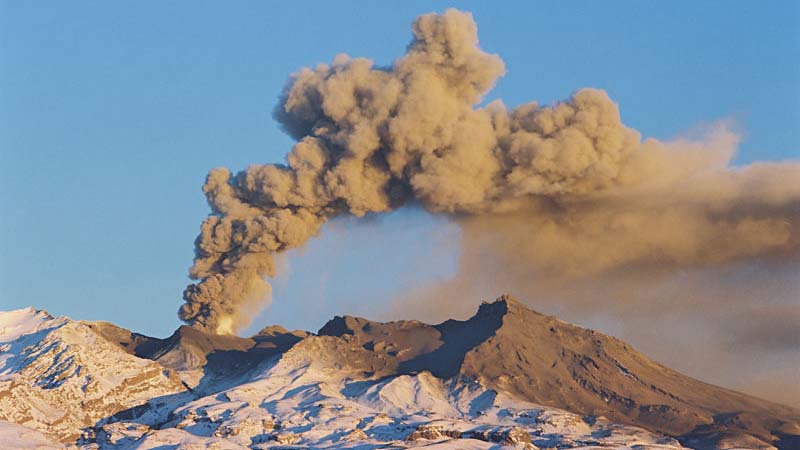← Natural hazards discover more
A volcano is a landform that forms when magma (hot, melted rock) from beneath the Earth’s surface erupts. New Zealand is part of the Ring of Fire – a circle of volcanoes around the Pacific Ocean where many eruptions happen.
There are 11 active volcanic areas in and around Aotearoa New Zealand – eight on land in the North Island and three offshore islands:
- Auckland volcanic field
- Northland (Kaikohe – Bay of Islands and Whangārei volcanic fields)
- Okataina (including Tarawera)
- Rotorua
- Ruapehu
- Taranaki
- Taupō
- Tongariro (including Ngāuruhoe, Te Maari and Red Crater)
- Kermadec Islands (Raoul and Macauley)
- Tūhua | Mayor Island
- Whakaari | White Island
New Zealand also has many underwater volcanoes in the Kermadec volcanic arc.

Taranaki is one of 11 active volcanic areas in and around Aotearoa New Zealand. Image: LEARNZ.
Volcanic unrest means a volcano is showing increased activity but has not erupted yet. This can last days, weeks, or even years. Not all unrest leads to an eruption, making it tricky for scientists and emergency managers to predict what will happen.
Types of volcanoes in New Zealand
- Cone volcanoes, like White Island and Ruapehu, have steep sides built by layers of lava and ash.
- Volcanic fields, like the Auckland volcanic field, have many small cones and craters scattered over an area.
- Caldera volcanoes, like those in the Taupō volcanic zone, have large collapsed craters formed after huge eruptions.

Pūtauaki in Edgecumbe is a cone volcano. Image: LEARNZ.
Learn more about types of volcanoes | Earth Sciences New Zealand.
Hazards from volcanoes
Volcanic eruptions can produce many dangers, but volcanic ash is usually the most widespread and disruptive. Ash is tiny rock particles that can fall over large areas, causing health problems, damaging buildings, and disrupting transport and electronics.
Getting ready for volcanoes
- Make and practise your emergency plan with your family.
- Have grab bags with emergency supplies ready.
- Find out about volcanic risks in your community by contacting your local Civil Defence Emergency Management Group.
- If you live in areas at risk of ash fall (like Auckland, Bay of Plenty, Gisborne, Hawke’s Bay, northern Manawatū, Northland, Taranaki and Waikato), add these supplies to your emergency kit:
- certified disposable dust masks (P2 or N95 rated) and goggles
- plastic sheeting to protect electronics
- cleaning supplies like brooms, shovels, and vacuum cleaners with spare bags
- heavy-duty plastic bags to collect ash.
- Keep emergency supplies in your vehicle too, in case you get stuck in ash.
If ash fall is forecast in your region:
- Stay indoors and keep windows and doors closed.
- Shut down heat pumps and set up a single-entry point with damp towels to stop ash from getting inside.
- Keep pets indoors.
- Listen to the radio and follow Civil Defence instructions.
- Check on neighbours who might need help.
- Stay out of restricted zones.

Volcanic ash is usually the most widespread and disruptive hazard from volcanic eruptions. Image: Earth Sciences New Zealand.
Being ready and knowing what to do can help you and your whānau stay safe during volcanic events.
Learn more about volcanoes | Earth Sciences New Zealand.
Māori kupu | key words
hūnga | volcanic activity
puia | volcano
pahūtanga | eruption
puia oho | active volcano
puia korehāhā | extinct volcano
pungarehu | ash



